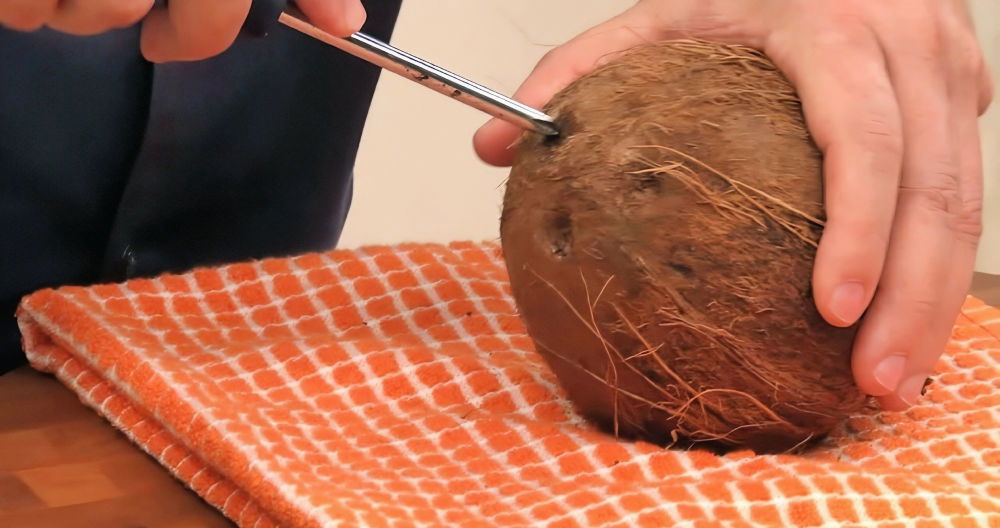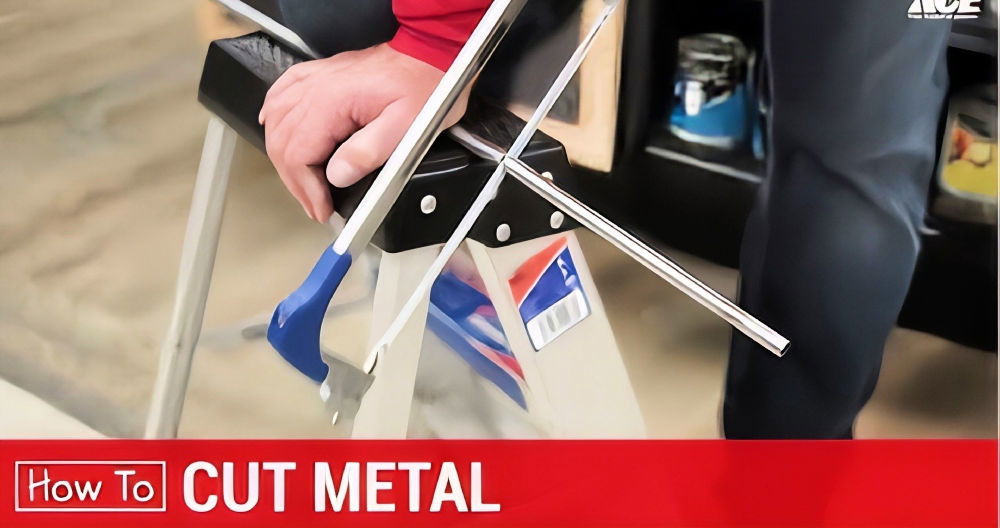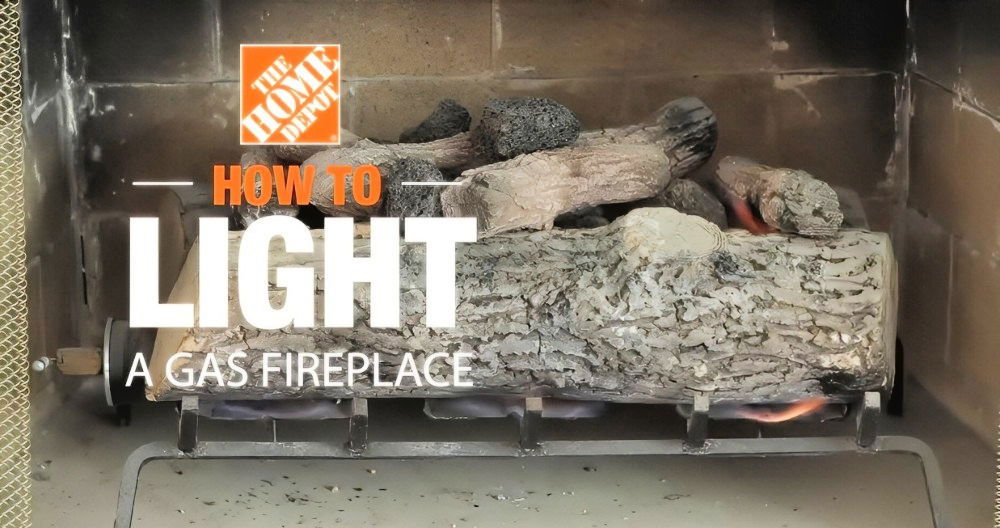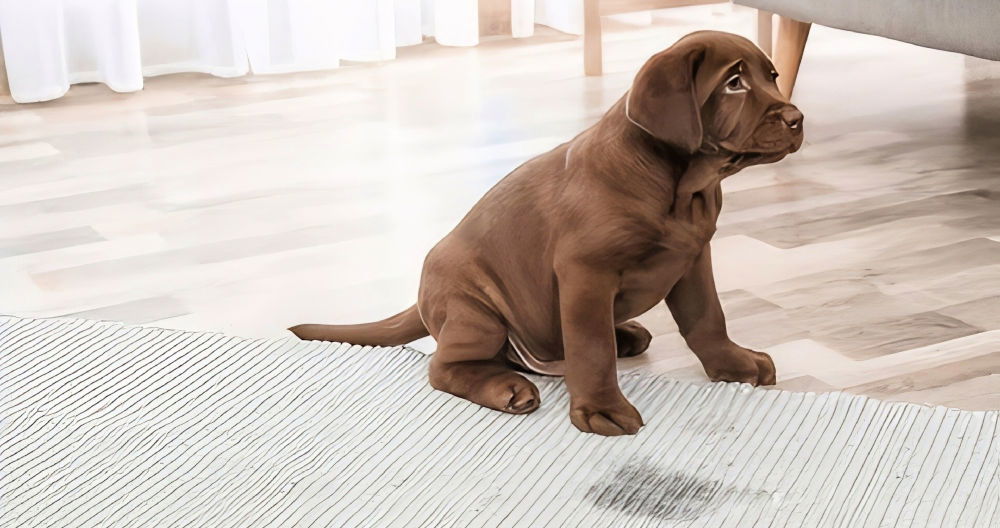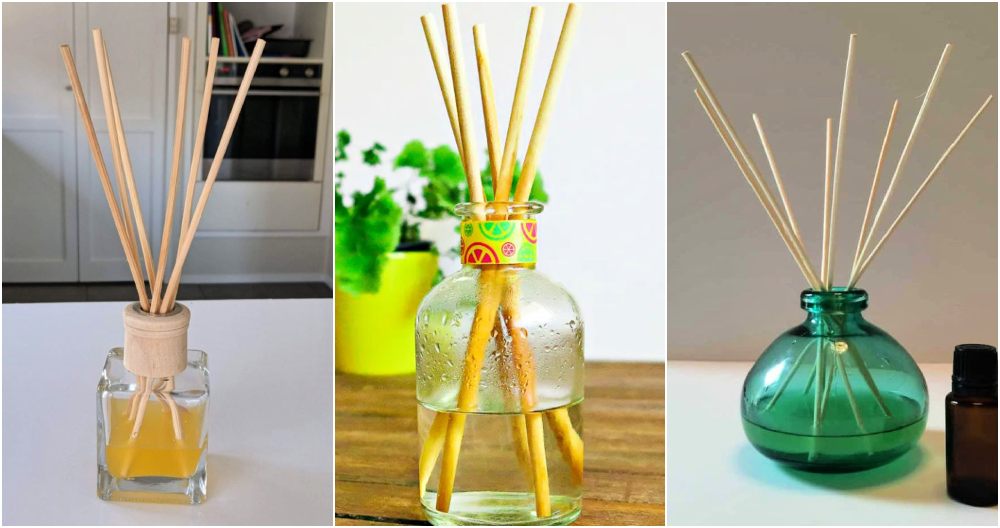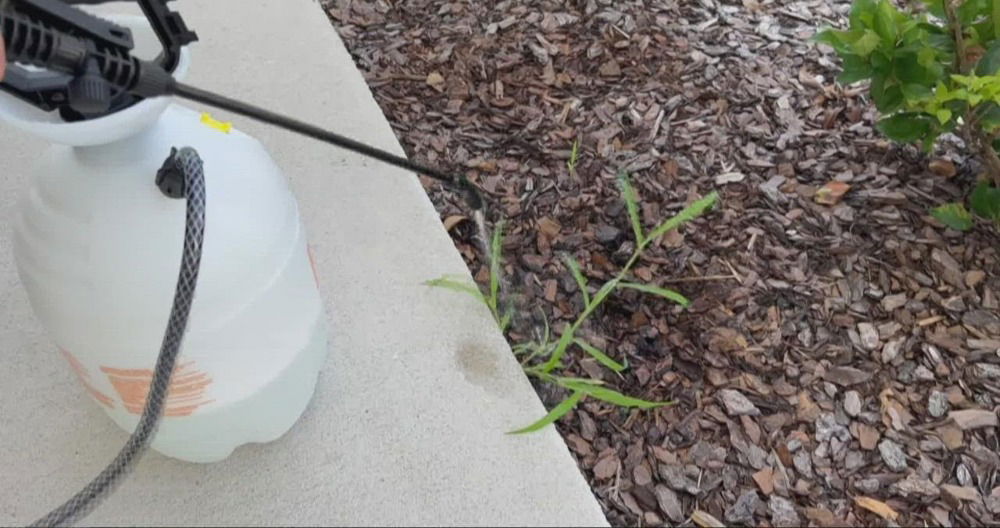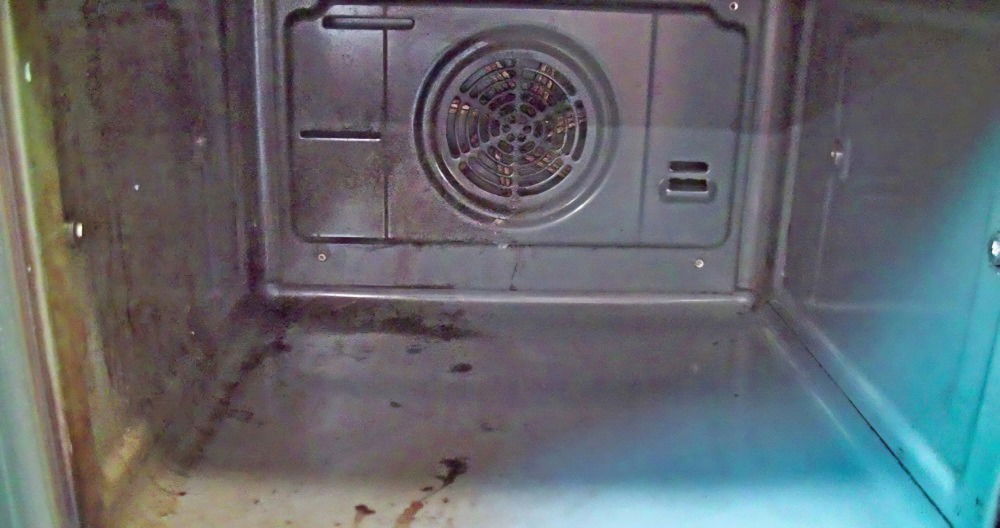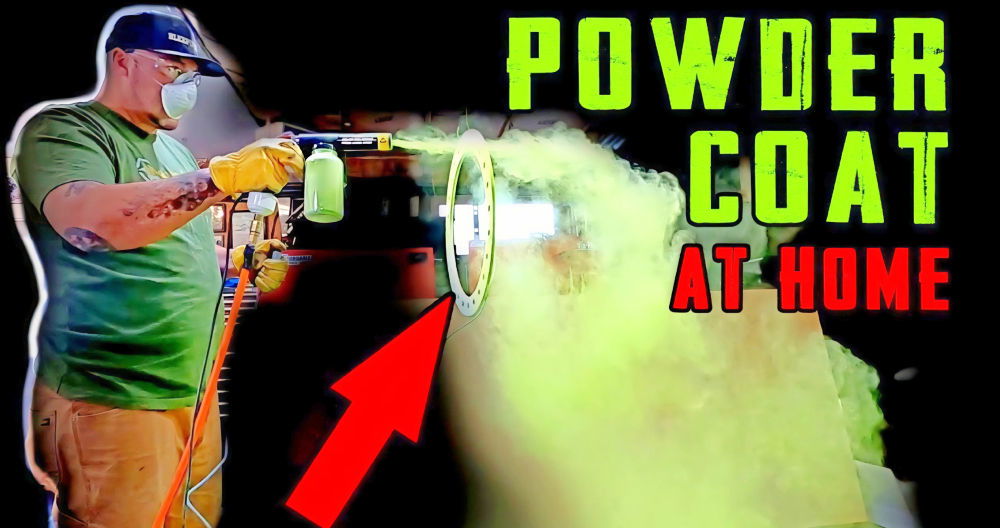Learning how to clean gutters safely and effectively has been a rewarding experience for me. I remember the first time I did it, I was nervous. But, with the right tools and a bit of patience, it turned out to be simpler than I expected. Gathering my ladder, gloves, and a trowel, I felt ready.
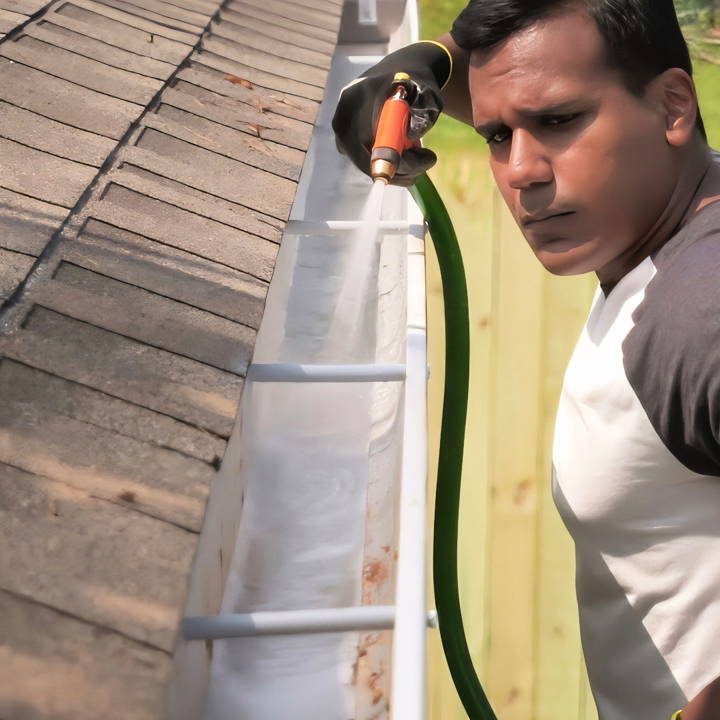
Cleaning rain gutters transformed my perspective on home maintenance. As I scooped out leaves and debris, I realized the importance of regular upkeep. Not only did I prevent water damage, but I also felt a sense of accomplishment.
A rain gutter cleaning doesn't have to be daunting. These practical steps will help you get started and make the task manageable.
Materials You'll Need
Before diving in, here are the materials I always gather for the job:
- Ladder: A sturdy ladder is crucial for safety, ensuring you can reach the gutters without risking a fall.
- Buckets: Two buckets - one for debris and one for tools. Hooking these to the ladder keeps everything within easy reach.
- Gloves: Durable gloves protect your hands from sharp debris and the elements.
- Trowel or Gutter Scoop: These are essential for scooping out compacted debris.
- Garden Hose with Spray Nozzle: Needed for flushing out the gutters and identifying clogs.
- Plumber's Snake (Optional): Useful for stubborn clogs in the downspout.
- Sealant: For sealing any leaks in the gutter seams.
- Hangers: In case you need to adjust the slope of the gutter.
- Pressure Washer: To clean the exterior of the gutters and remove any mildew or dirt.
Step by Step Instructions
Learn how to clean gutters with our step-by-step instructions. Follow these 10 simple steps for spotless and efficient rainwater drainage.
Step 1: Set Up Your Ladder
The first step is to set up your ladder on level ground. This is crucial for safety. I always double-check the stability of my ladder before climbing. It's also a good idea to have someone spot you if possible.
Step 2: Remove Large Debris
Start near a downspout. I grab one of my buckets and begin by clearing large debris like leaves and twigs by hand. This initial removal is straightforward but essential to make the next steps easier.
Step 3: Use a Trowel or Gutter Scoop for Compacted Debris
Once I've removed the larger debris, I use a trowel or gutter scoop to handle the compacted materials. This part might take some time, especially if it's been a while since the last cleaning. Scooping out all the gunk ensures better water flow when we flush the gutters later.
Step 4: Clean the Downspout Strainers
After clearing out the gutter, I move on to the downspout strainers. Often, these can get clogged with smaller debris, which I clean out by hand. It's important to ensure these strainers are free from blockages to allow water to flow smoothly.
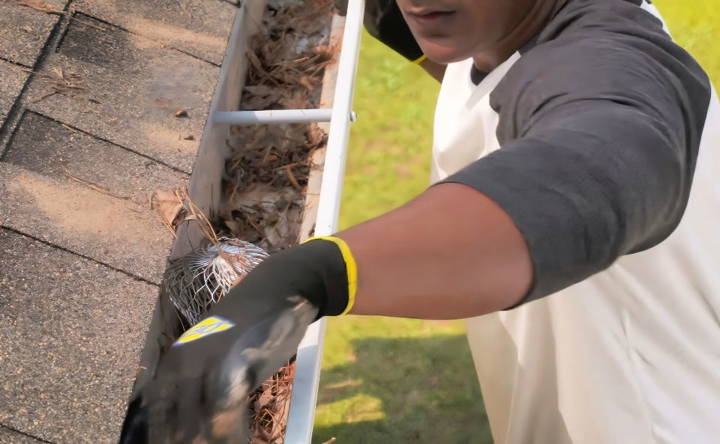
Step 5: Flush the Gutters with a Garden Hose
Next, I fit my garden hose with a spray nozzle and flush the gutters with water. This step helps remove any remaining small debris and dirt. I start at the end farthest from the downspout, moving toward it. If I notice that the water isn't flowing as it should, there might be a clog.
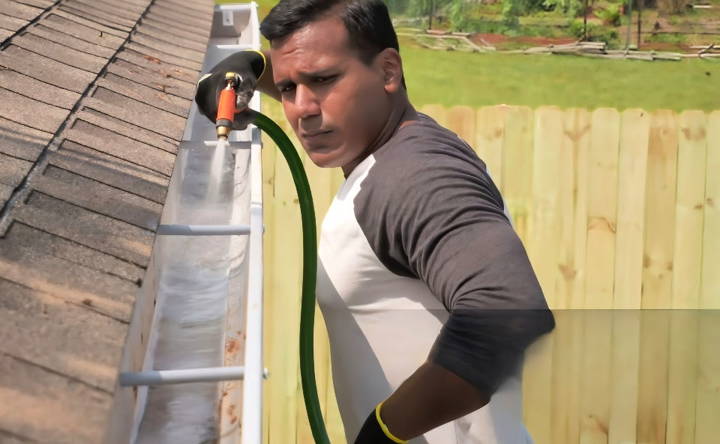
Step 6: Check for and Remove Clogs
If I find that the water flow is still restricted, I check the downspout for clogs. In case of a blockage, I feed my garden hose up the downspout and turn the water on at full pressure. This trick often clears the clog for me. For more persistent clogs, I sometimes use a plumber's snake.
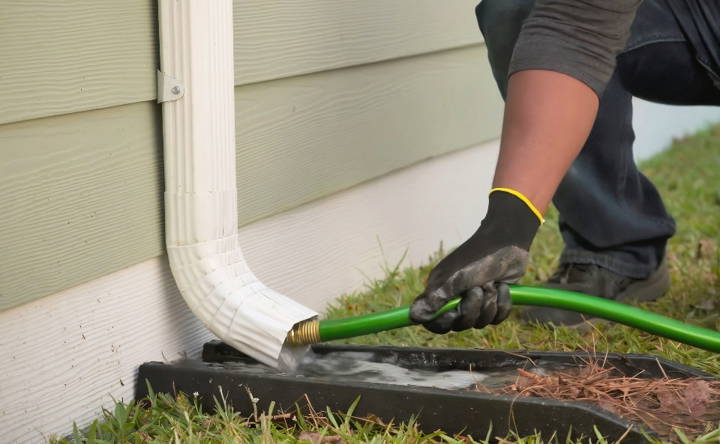
Step 7: Inspect for Leaks and Make Repairs
After ensuring the gutters are clog-free, I run more water through the system to check for leaks at the seams. If I spot any, I use sealant to fix them. This step is crucial for preventing water from seeping into the house structure and causing damage.
Step 8: Adjust the Gutter Slope
Another thing I look out for is the slope of the gutter. Standing water often indicates a slope issue. If this happens, I detach the hangers and adjust the run until the water flows properly toward the downspout, then reattach the hangers. This adjustment ensures your gutters are directing water away from your home efficiently.
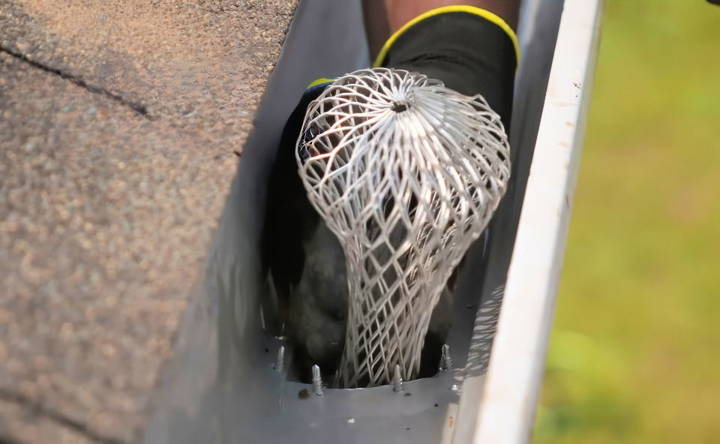
Step 9: Secure and Inspect the Gutters
While I'm up on the ladder, I also take the opportunity to make sure the gutters are securely attached to the house. Loose gutters can lead to more significant problems down the line. I inspect all sections and downspouts for any signs of damage and make necessary repairs.
Step 10: Clean the Exterior of the Gutters
Lastly, I use a pressure washer to clean the exterior of the gutters. This makes them look good as new, removing all the mildew and dirt buildup. It's also a satisfying way to complete the task.
Advanced Techniques for Gutter Cleaning
When it comes to gutter cleaning, going beyond the basics can significantly improve the efficiency and longevity of your gutter system. Here are some advanced techniques that can help:
- Use a Pressure Washer: A pressure washer can be a game-changer for cleaning gutters. It's powerful enough to remove stubborn debris and stains without the need for manual scrubbing. However, use it with caution to avoid damaging the gutters.
- Install Gutter Guards: Gutter guards are a great investment to minimize the need for frequent cleanings. They prevent leaves and larger debris from entering the gutter, reducing the likelihood of clogs. There are various types available, such as mesh screens, foam guards, and surface-tension units, each suitable for different situations.
- Seamless Gutters: Consider upgrading to seamless gutters. Unlike traditional segmented gutters, these have fewer joints, which means there are fewer places for leaks to develop and less debris gets trapped.
- Regular Inspection: Inspect your gutters regularly for signs of wear and tear. Look for rust, holes, and any sections that are pulling away from the house. Early detection of these issues can save you from costly repairs in the future.
- Downspout Extensions: To further protect your foundation, add downspout extensions. These direct the water further away from your home, preventing water damage to your basement and foundation.
- Flush with a Garden Hose: After removing debris, flush the gutters with a garden hose to ensure water flows freely. This will also help you spot any leaks that need to be sealed.
- Consider a Gutter Cleaning Robot: For those who prefer a tech-savvy approach, gutter cleaning robots are available. These devices can travel through your gutters and clear out debris, all controlled by a remote.
Use advanced techniques to keep your gutters in top shape, protecting your home from water damage. DIY is possible, but call professionals for difficult tasks.
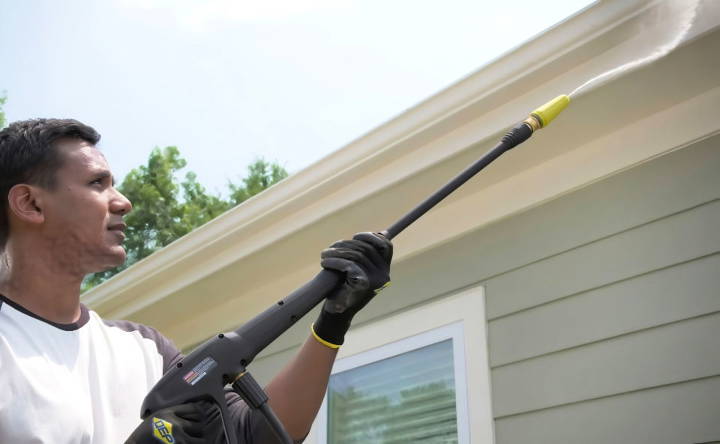
Troubleshooting Common Gutter Problems
Maintaining gutters is crucial for the health of your home. Here's a guide to solving some common gutter issues:
- Clogs and Blockages: The most frequent problem is clogging. If water isn't flowing or you notice overflow, there's likely a blockage. Safely climb a ladder and remove any debris. Installing gutter guards can prevent future clogs.
- Leaks and Holes: Small leaks can often be fixed with gutter sealant. For larger holes, you might need a patch. Clean the area around the leak, apply the sealant, and place the patch. Ensure it's dry before the next rainfall.
- Sagging Gutters: Gutters sag when they're full of water and debris. This can cause them to pull away from the house. To fix, you may need to replace hangers or spikes. Make sure they're spaced correctly to provide adequate support.
- Improper Slope: Gutters need a slight slope towards the downspouts for water to flow properly. If water pools, adjust the hangers to make the correct angle. A good rule of thumb is a quarter inch of slope for every 10 feet of gutter.
- Downspout Issues: Downspouts can become disconnected from the gutter or the house. Reattach them securely, ensuring water is directed away from the foundation. Consider adding extenders to keep water further from your home.
- Overflowing Gutters: This can be due to clogs or insufficient gutter size. Clean them first. If the problem persists during heavy rain, you might need larger gutters or additional downspouts to handle the volume of water.
Fixing these issues ensures your gutters work well and protect your home. If unsure, hire a professional for safety.
FAQs About How to Clean Gutters
Discover the best tips and answers to FAQs about cleaning gutters effectively. With these expert insights, ensure proper maintenance.
Regular gutter cleaning prevents blockages that can cause water to overflow and damage your home’s foundation, walls, and landscaping. It also helps to prevent pest infestations and extend the life of your gutter system.
Yes, there are tools available that allow you to clean your gutters from the ground. These include extendable gutter-cleaning tools, leaf blowers with special attachments, and even gutter-cleaning robots.
It’s recommended to clean your gutters at least twice a year. However, if you have many trees around your home, you may need to clean them every three months to prevent clogs from leaf and pine needle buildup.
Safety is paramount when cleaning gutters. Always have a helper when using a ladder, wear non-slip shoes, and use gloves and safety goggles. Inform someone of your plans and check in with them once you’re done to ensure your safety.
Gutter guards can be a great investment to reduce the frequency of cleanings. They prevent large debris from entering the gutters while allowing water to flow through. If you decide to install them, make sure to choose the right type for your home and follow the manufacturer's instructions for installation.
Conclusion
I understand how important it is to keep your home safe and well-maintained. By taking the time to clean your gutters, you're investing in your home's future. Remember, these easy steps can help you not only protect your property but also give you peace of mind.


